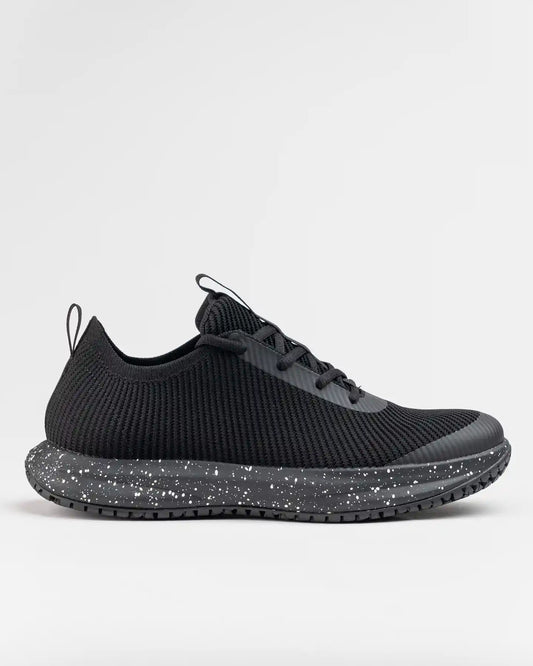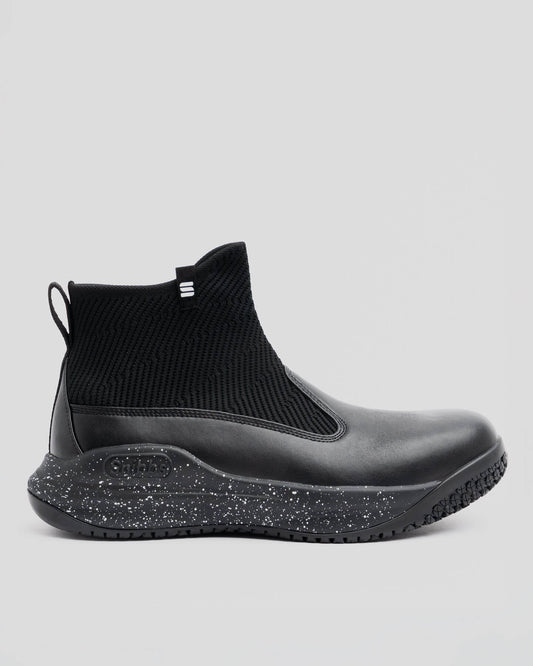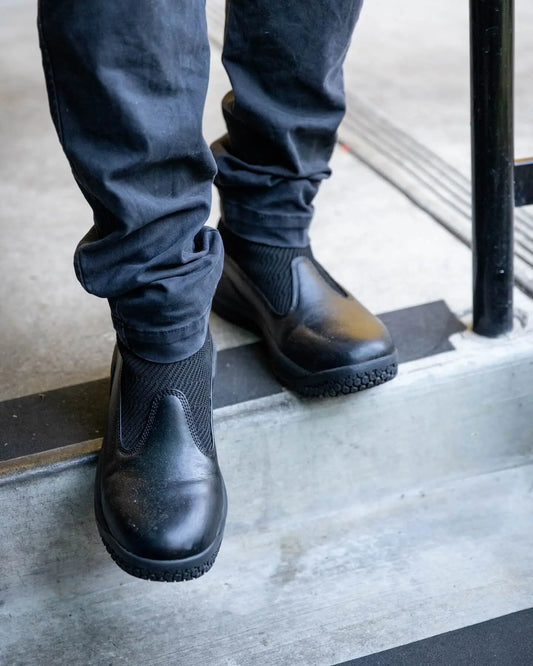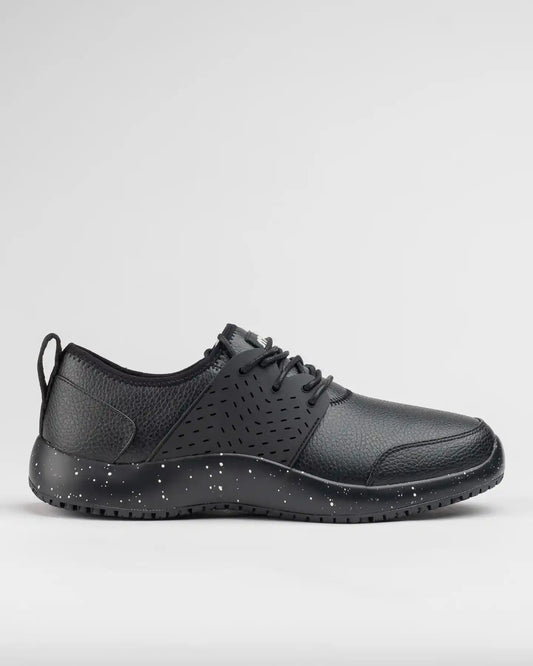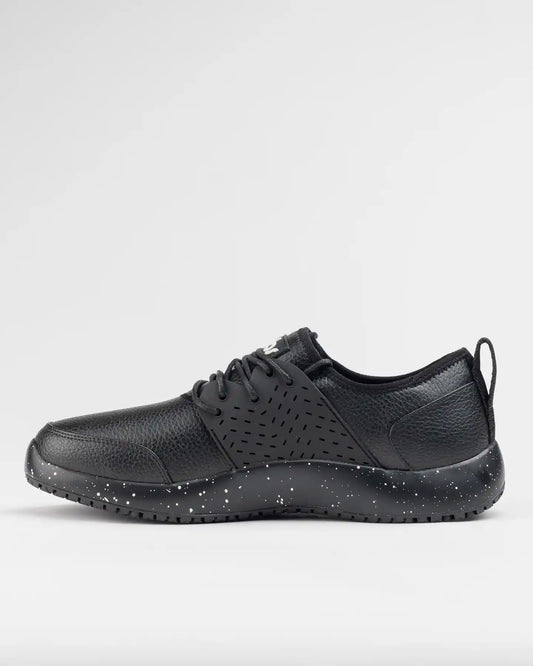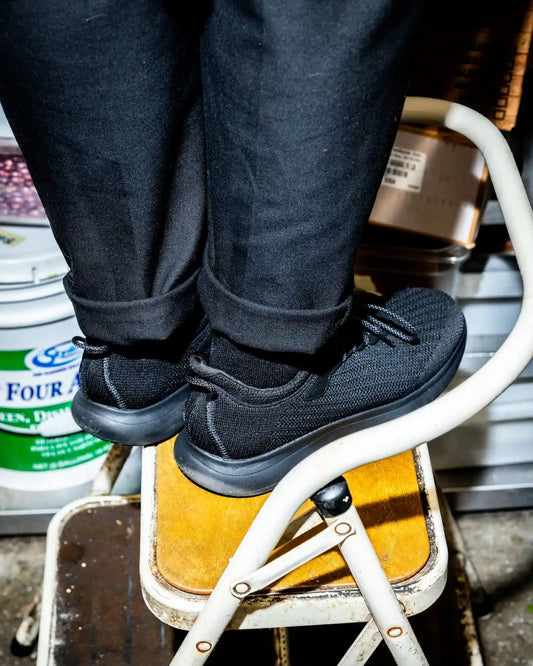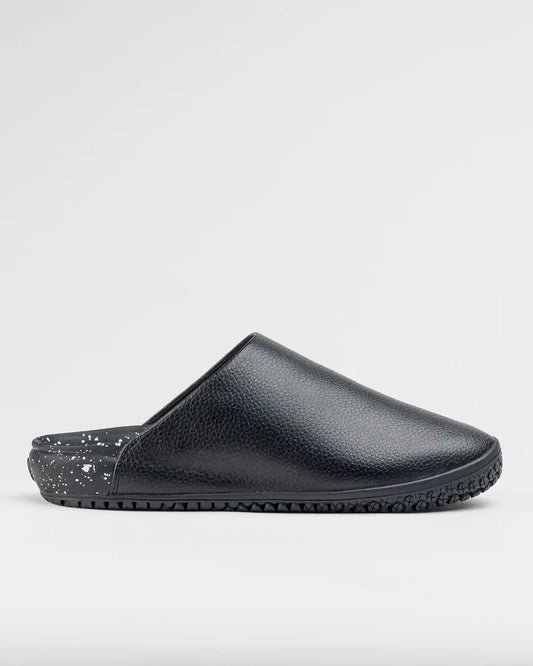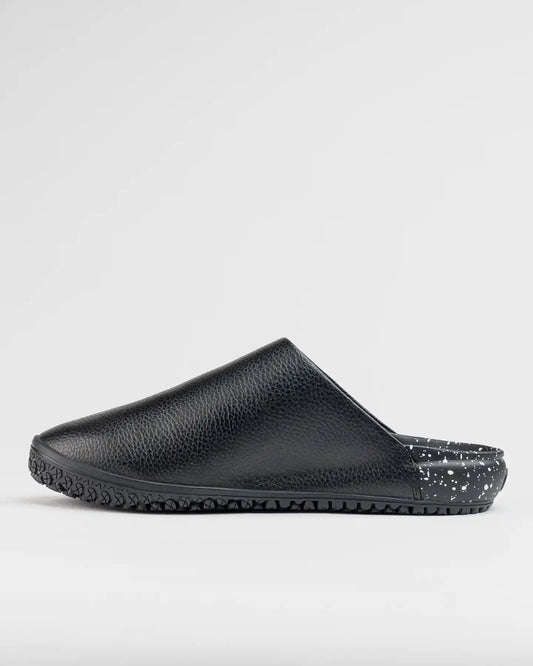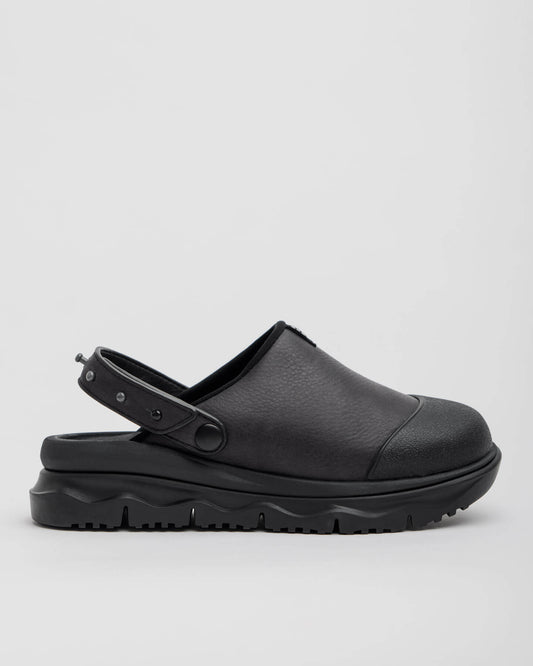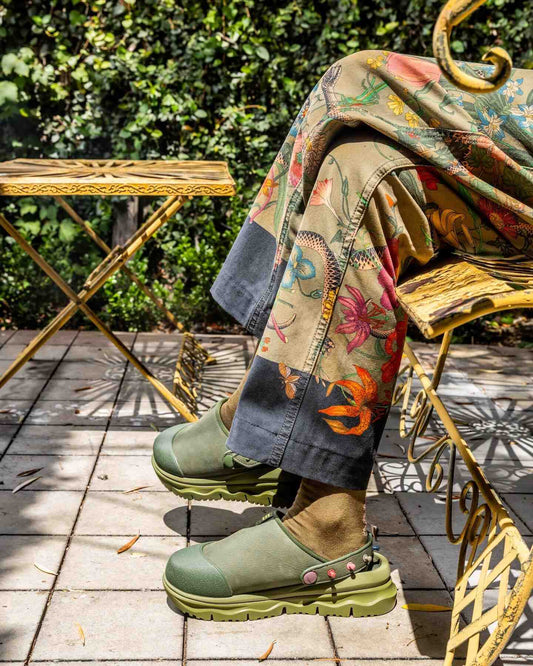Is EVA Foam Biodegradable?
Alex Kinejara
A durable and adaptable material, EVA foam is used in a range of everyday products, from the soles of your cross-trainers to your flip-flops. It can also be found in certain adhesives, packaging, medical equipment, and plastics.
It’s everywhere, but is EVA foam biodegradable?
Compared to other types of synthetic plastics like PVC, EVA foam is preferable. However, it’s not always biodegradable. In fact, only certain sustainable or plant-based EVA foam products can be broken down.
What Is EVA?
Maybe the sneakers you’re wearing right now feature comfy EVA foam insoles, or perhaps your yoga mat is made from an EVA foam compound. Essentially, EVA materials compose many everyday products you have in your home.
But what is EVA foam exactly? Let’s break it down.
EVA stands for the two materials that principally comprise it.1 Those materials are:
When you combine ethylene and vinyl acetate, you get EVA. It’s a soft material with a good amount of elasticity that can be made into a tough, rubbery plastic. On its own, it doesn’t offer too much cause for concern—in fact, it’s thought to be a safer alternative to thermoplastics like PVC.2
What is EVA Foam?
In its foam form, EVA can be used as a substitute for a variety of substances, from materials like rubber and neoprene to fiberglass and foams that are conventionally made from PVC.3 It’s a desirable material because of characteristics like:
- Shock and vibration absorption
- Liquid resistance
- Weather-resistant
- Chemical resistant
- Buoyancy
EVA foam is put to such a wide range of uses that it is nearly impossible to list them all. From the padding in sporting equipment to electrical appliances, book-binding, and even plastic wraps, EVA foam is all around us.4 And a diverse range of industries uses EVA-based materials in their products, including:
- Athletics
- Automobile manufacturers
- Construction
- Electronics
- Footwear
- Healthcare
- Leisure and recreation
Does EVA Foam Biodegrade?
Complicating the popularity and widespread use of EVA foam is the fact that it is not always biodegradable.3 But before we get into exactly why that is, let’s have a quick review of what biodegradable means.
A biodegradable material is one that is broken down to its original state by biological factors like bacteria, fungi, and microorganisms. Once they’ve been broken down, biodegradable materials seep back into the earth and are reused.4 Just a few examples of biodegradable materials include:
- Human waste
- Paper products
- Plant waste
Materials like EVA foam in its raw form that don’t always biodegrade can be very detrimental to the environment. When a material doesn’t biodegrade, it hangs around, contributing to land and water pollution. And even when we come up with other ways to dispose of the material, like burning, those methods can pollute the air and soil.
Of course, EVA foam isn’t the only potentially environmentally harmful material we use. Other examples include:
- Batteries
- Glass
- Metals
- Plastics
Why Doesn’t EVA Foam Biodegrade?
The reason that EVA foam isn’t always biodegradable has to do with how it’s formed. Firstly, EVA foam is a type of petrochemical, which are materials sourced from petroleum that typically become polymers.
Remember earlier when we said that the vinyl acetate that makes up the VA of EVA foam is a monomer that helps molecules bond together in long chains known as polymers? Well, that’s a big part of why petrochemical EVA foam isn’t biodegradable.3 In fact, synthetic polymers like EVA are usually plastic substances. That said, polymers are present in nature in the form of wood and natural rubbers.
In petrochemicals like EVA foam, those bands of plastic-forming bands of polymers are made by carbon atoms that are very large (for molecules), strong, and durable. This means that even the strongest biological processes can’t break them down easily or quickly. As a result, EVA foam can hang around for potentially thousands of years.
Impact of EVA Foam on the Environment
EVA is one of the least harmful synthetic materials, but its disposal can have a significant impact on the environment.
When exposed to elevated temperatures, humidity, and UV radiation, EVA can degrade—albeit at a very slow rate.5
However, when this occurs, EVA materials can release volatile organic compounds (VOC) into the air when decomposing, which can pollute groundwater and rivers.6
Are There Biodegradable Alternatives to Conventional EVA Foam?
Although the environmental impacts of EVA foam are a cause for concern, there are a few alternatives available that can lessen the detrimental effects of its use.
The best alternatives to EVA foam are products that don’t use the petrochemicals that degrade-resistant polymers.
For example, efforts to promote sustainability in the shoe industry have led to companies decreasing their reliance on the raw form of EVA foam in the manufacturing of shoes. Instead, companies are using alternative methods and sustainable resources to construct shoe soles with as much durability and comfort as EVA foam has to offer.
One way this can be done is by adding Midori-Bio. Midori Biosolutions are additives integrated into different types of polymer to speed up the biodegration process and reduce it to 3 to 5 years as opposed to 300 to 1,000 years.10 Adding Midori-Bio to EVA foam can help it biodegrade quicker rather than its raw form.
Other alternative materials include:
Developments like these can go a long way to decreasing our collective reliance on solely the raw form of EVA foam and lessening the impact of materials that aren’t biodegradable or can’t be recycled and reused.
But there are other ways that scientists are working to make EVA foam less environmentally detrimental.
For example, EVA-based foams that alter their composition slightly are available. They’re a sustainable spin on EVA foam that’s biodegradable and less harmful.3 The process for making them is slightly different from the process for making conventional EVA, principally because they:
Use an EVA-based foamable composition – EVA-based foam materials that do biodegrade are out there. These materials include EVA resins, foaming agents, and lubricants, among other ingredients. Importantly, these alternative EVAs use plant-based ingredients, which promote biodegradability.
Biodegradable EVA foaming process – The process of making foam from EVA materials is integral to creating a biodegradable product. In less environmentally harmful EVA products, a high-heat, high-pressure mold and press are used to create an EVA-based foam that’s biodegradable.
Aside from being better for the planet than conventional EVA foam, biodegradable EVA-based foam offers essentially all of the same benefits as regular EVA. It’s proven to be just as shock absorbant, water-resistant, and insulating.
What Happens to Used EVA Foam?
If you’re thinking of getting rid of your worn-out yoga mat or old gym shoes with EVA soles made in its raw form, you won’t be able to recycle them very easily. Unfortunately, that means that you’ll have to settle for putting your old products in the garbage, unless you figure out a way to repurpose them yourself.
In other words, most of your old EVA-based products are heading to the landfill.8
But for such a popular product, why isn’t recycling UVA foam easier? There are two primary reasons for this:
Go Sustainable With Snibbs
Perhaps the best hope we have for keeping EVA foam from polluting our planet is to decrease our reliance on its raw form alone. At Snibbs, we’re making personal sustainability easier than ever by making comfortable, safe, and stylish slip resistant shoes that limit the raw form of EVA foam in favor of 100% recycled materials, a sustainable version of EVA foam, and plant materials.
That means the foam in sustainable shoes degrades in years, not centuries. For you, it means that, when it comes to your footwear, you don’t have to sacrifice quality or comfort to support the planet. With Snibbs, you can have the best of both worlds.
So, what is sustainable footwear like from Snibbs? Our athletic shoe materials are made of recycled polyurethane midsoles, post-consumer polyester/microfiber uppers and liners, recycled cotton laces, and plant starch lace braces. And we use 100% recycled cardboard for all of our packaging to ensure we reduce our carbon footprint.
Ready to make a sustainable impact with your footwear? Shop Snibbs today.
Sources:
- Hello Natural Living. The Lowdown on EVA and EVA Foam Safety. https://www.hellonaturalliving.com/the-lowdown-on-eva-and-eva-foam-safety/
- Foam Sealant LTD. What is EVA Foam and its Common Uses? https://foamsealant.com.au/what-is-an-eva-foam-and-its-common-uses/#
- Foam How. Is EVA Foam Biodegradable? Which Ones Biodegrade, a Guide. https://foamhow.com/is-eva-foam-biodegradable-which-ones-biodegrade-guide/
- The Balance. What “Biodegradable” Really Means. https://www.thebalancesmb.com/what-does-biodegradable-mean-2538213#
- Research Gate. An examination of the response of ethylene-vinyl acetate film to changes in environmental conditions. https://www.researchgate.net/publication/306258512_An_examination_of_the_response_of_ethylene-vinyl_acetate_film_to_changes_in_environmental_conditions
- Planet Earth Weekly. Replacing EVAs with Algae Products: The Environmental Impact. https://planetearth5.com/2016/10/07/replacing-evas-in-our-environment-with-algae-products/
- Midori Bio. Midori Biodegradable Solutions. https://midori-bio.com/biodegradable-solutions/
- Citizen Sustainable. Is EVA Eco-Friendly? 14 Facts You Should Know (+3 Alternatives). https://citizensustainable.com/eva-recyclable/#

